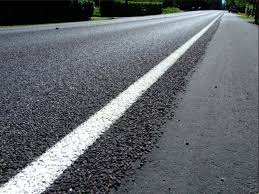President William Ruto has abandoned road construction technology that the Uhuru Kenyatta predecessor introduced in 2014 due to durability concerns. Also called LVSR (Low Volume Seal Roads) technology, this technique is controversial because it uses bitumen to lay roads that see a low traffic of automobiles.
Importance
It can reduce road construction costs by up to 60% of the present amounts.
Typically, conventional road building practices concentrate on the building of high speed roads – which generates the need for reconstruction of the road surface that sets a high price.
Sometime during the construction, the land is purchased which requires relocation of utilities and also that of the people.
In contrast to this, Low Volume Seal Roads technology is moving towards strengthening of roads while keeping the existing routes unchanged. This lowers the construction prices by reducing the amount of soil movement, doesn’t require property acquisition, and doesn’t require utility relocation.
The technology makes it possible to build paved roads to highways standards, and hence increase the pavement life up to at least 15 years, thereby decreasing the road life cycle cost.
Despite the advantages of this option, the government will not longer use this standard anymore for road construction as stated by Murkomen of Transport Cabinet Secretary.
This action is a reaction to all roads that have already had the LVSR technology and the noted damages, this results to.
“When read the construction of these roads we had in mind to be exclusive for private vehicles and public transport only but it has since then become even commercial vehicles with heavy loads.”
Although LVRS technology has been agreeable in South Africa and Botswana, some countries and individuals still dispute its use with some proponents and detractors.
The supporters reason that it is the best approach, as well as an ongoing maintenance operation for rural roads, while the opponents believe that the technology would only work on roads with extremely low traffic.
In fact, a previously conducted study by TRL, a UK-based independent transport consultancy indeed show that for a road to be upgraded the optimum traffic level would be about 40 vehicles per day via LVSR technology.
This is a drastic reduction compared to the previously suggested thresholds for Sub- Sahara Africa that are above 200 vehicles per day, which hold on to many practitioners’ mindsets.
As sealings begin to deteriorate much faster at higher traffic levels, periodic re-sealing (every 3-5 years) becomes necessary; however, the cost for this is high which can then be a burden on poor economies.
The Kenyan is, however, putting their faith on low volume and seal roads technique to do a reduction of around 10,000 kilometres of rural roads in a bid to having better road network in the country.
$134 Million Set Aside by the Kenyan Government as Construction of Dongo Kundu SEZ Berth Takes Shape


